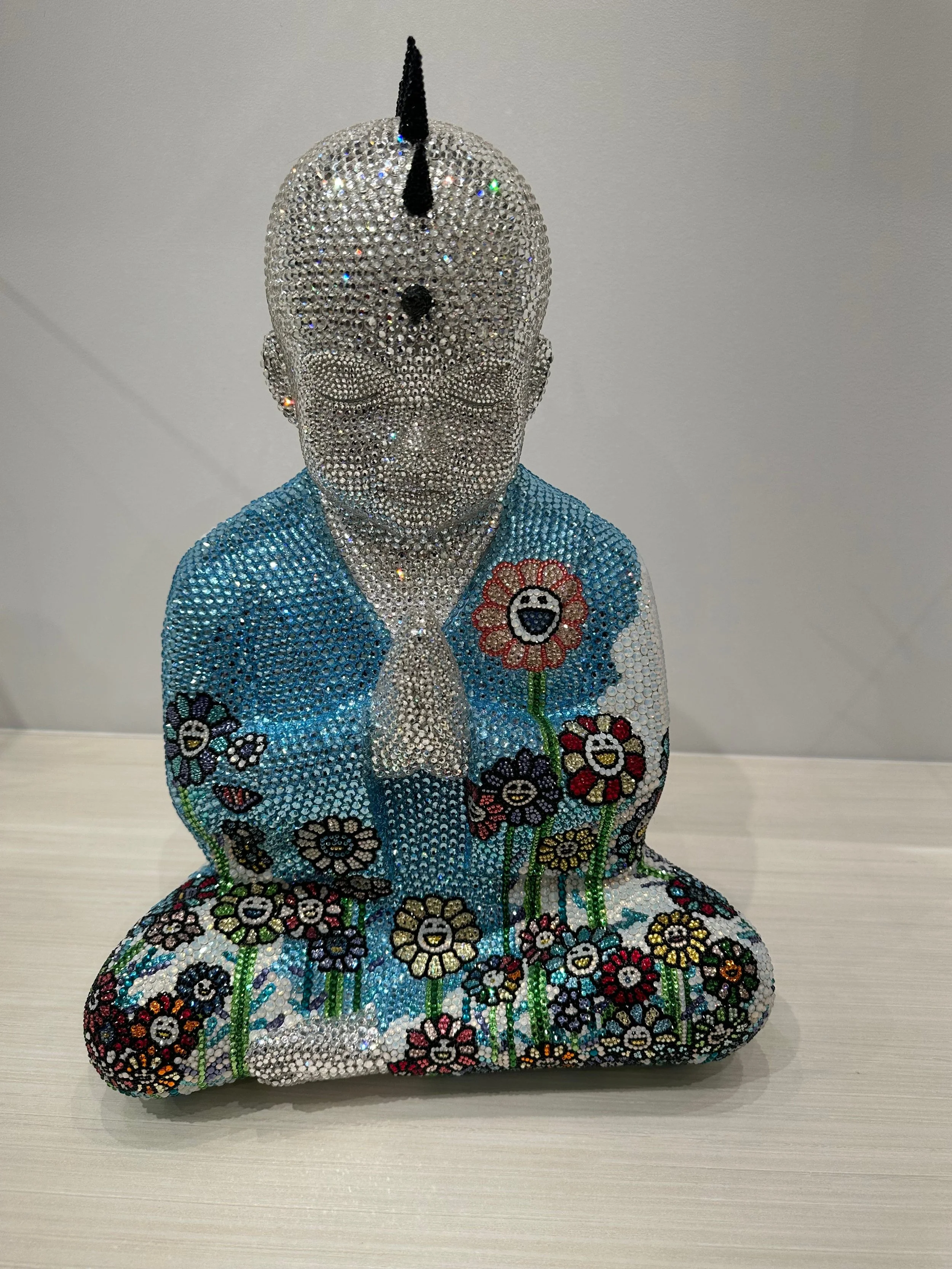Soaring Via Feedback.
To grow one needs to continuously improve.
A key ingredient to improvement is feedback.
Feedback however is both difficult to give and receive.
In fact the words “feedback”, and “performance review” are being replaced by words such as “feedforward” and “connect sessions”
In addition, there is a concern that criticism may be taken as a form of insensitivity or discrimination as companies rightly focus on ensuring diversity, equity and inclusion.
We all love to linger in cuddle puddles and be sprayed with showers of reinforcement that builds our self-confidence. But, we are living in a competitive world where a lack of feedback could leave us stuck in place as others enhance skills and address issues.
Feedback can be given in ways that are humane, sensitive and caring but also with enough clarity to enable everyone to keep growing.
The six steps to giving better feedback.
Best practices suggest that there are six approaches that can help people give and accept feedback:
Focus on how the task or the process could have been improved rather than criticize the person: By focusing on how an assignment could be done better the emphasis is in on the product and not the person.
Compare the shortfalls to a higher standard that might have been met on another project or another time: By recalling assignments or times where the individual or team did a great job, one reinforces to the person or team that they are capable of having done better. The emphasis is on what was less than ideal on this occasion versus rather than believing the individual or team is incapable of doing a good job.
Be sensitive and aware of extenuating circumstances: We all have bad days and many times these are a result of something else distracting us or worrying us in our lives. It may be illness, family issues or other challenges. By empathizing with an individual and wondering if there is a reason quality has slipped indicates both concern and humanity.
Provide input as specific as possible as to what could be done better: Pointing out what went wrong or was less than optimal is only one half of feedback. The more important half is showing or teaching or guiding on how one can improve. Identify either steps or training or changes that need to be made.
Identify the next opportunity or project for a do-over or try another take: By showing both how one can improve and then identifying an upcoming opportunity to put the feedback to work concentrates the mind and channels emotions to action and the possibility of correcting the shortfall.
Provide personal help and perspective: If feedback is provide with examples of how the person providing feedback or other leaders have learned and improved, it signals that mistakes, mess-ups, and other shortfalls are par for the course in career growth. By also asking how you can help reinforces that you are on the persons side and are committed to building them to be better versus tearing them down.
Radical Candor
Kim Scott was a CEO coach at Dropbox, Qualtrics, Twitter, and other tech companies. She was a member of the faculty at Apple University and before that led AdSense, YouTube, and DoubleClick teams at Google and her book Radical Candor provides a great framework for feedback.
I had Kim Scott on my What Next? podcast and it is a must listen. Recently I had an other opportunity to interview Kim and she is not a fan of “feed forward”. Listen and you will be much better at giving feedback with radical candor where one combines caring personally with direct challenges.
Direct caring feedback on writing better presentations.
Most if all of us spend time writing and giving presentations.
We often focus on what we put in versus what people take out.
My friend Mark Achler is among many things a very successful venture capitalist who has often been asked on how to write a great pitch deck. After thinking about it for a while Mark put together a wonderful seven minute video on why the best presentations marry essence, empathy and emotion.
His advice is for anyone who writes presentations to sell or convince anybody not just investors. Listen to Mark not just for substance but the style with which he communicates and provides feedback!
Three ways of ensuring one is getting feedback
While we learn how to give feedback and not be scared of receiving feedback, how can we ensure that we get feedback?
1. Scan for signals: People are constantly providing feedback even if they are not vocalizing it. In some instances, you may gauge it in numerical signals from how well your writing is read, reacted to, or shared or whether you are invited to key meetings. Other times it is to watch facial and body language. You learn a lot by reading a room or a Zoom gallery.
2. Ask for feedback on a regular basis: One can do this with three simple questions framed in ways that ensure people are comfortable helping you since they are positive in tone:
a. What worked well?
b. If/when I do this next time what could be better?
c. Who do you think does what I need to do well and where can I learn more?
3. End of Day or Week Self Review: Most people know in their gut what worked or went well and what did not. Many successful individuals end the day or week with some variation of a quick three step review :
a. The Work: What went well with my work product that I feel proud about and what could have gone better?
b. The Team: What felt good and productive in the way I interacted with people and where could I have been better in some ways in handling my or someone else’s emotions.
c. The Improvement: What little improvement did I manage to make today or this week? A new habit. Learning a new approach. Strengthening a relationship.
We get better not by being better than other people but aiming to being better than we were yesterday. Every day.
To do so it is critical to help our teams and ourselves with feedback.
Time.
Photography by Rishad Tobaccowala
Time is the essential asset.
Franz Kafka wrote “The meaning of life is that it stops”.
How we spend our days is, of course, how we spend our lives wrote Anne Dillard.
Tell me, what is it you plan to do with your one wild and precious life? asked Mary Oliver
Life is a journey through time in search of meaning.
A definition of success is the ability to spend time in the way that gives one joy.
To understand what is important before it is too late.
Photography by Rishad Tobaccowala
Successful firms and people use time differently than others.
Three behaviors/beliefs that are common to most successful individuals and firms:
The Power of Compound Interest/Compound Improvement: The most powerful concept in gaining wealth or knowledge is continuous growth over a sustained time period.
See early what others see late: Almost every successful person or company recognized a trend when it was a little stream rather than a gushing river and then committed to align with it.
Persistence: They just keep on going through adversity and setback and they remember Queen Elizabeth the First who said “Time dissolves more problems than man solves”
Photography by Rishad Tobaccowala
Five ways to make the most of time.
1. Eliminate: Many people recognizing the limitations of time tend to try to do as much as possible. They multi-task and run around in a frenzy. Usually all they achieve is more multi-tasking and more frenzy. Doing more stuff is not the same as achievement.
Activity is not productivity.
Showing how busy one is does not indicate how important one is. Rather, it might indicate that we have lost control of time and are a slave to our mailbox and have a “Pavlovian” reaction to the chiming insistence of notifications.
2. Focus: The key to doing less is to focus. Here are two filters on how to focus:
a) Comparative Advantage: We should spend our time doing things that we can do better than most people. Some focus areas are easy like being a spouse or a parent, since by definition we should be able to do this better than other folks. However, for many of the errands we run and the assignments we take on at work, it is important to ask if we can outsource or delegate or find a colleague who is better than us so we can focus on what we are best at.
b) Positive Outcome: We should try to choose how we spend our time in ways in which we create a positive outcome. Either we 1) earn a financial reward, 2) learn something new, 3) help someone else or the team get better or 4) the experience in itself feels good.
3. Scale: We can scale ourself and our impact and therefore save time. Two ways to do this is to use "leverage" and "momentum".
Much of what we do as white-collar workers are the 4Cs: create, cogitate, communicate and convince. Basically with a few exceptions our success is based in large part on how we are as sculptors of ideas and points of view.
a) Leverage: Today technology and scheduling allow people to leverage. One can use social media, good writing and speaking skills to reach many people that you need to communicate and convince. One are not limited to small meetings and groups. Today you can move between continents with the flick of a button.
b) Momentum: The trend is our friend. To not waste our time, one needs to understand the underlying trend that is driving our firm or our business and, in most cases align with it. The world is going becoming multi-polar. Marketing is blurring and collapsing with the end of the funnel and with everything becoming multi-media and omni-channel. People, talent and individuals are growing more powerful becoming their own media companies in some cases. Most countries are becoming multi-ethnic and aging fast.
4. Do new things. Tattoo the moment: While the first three behaviors of elimination, focus and scale are logic driven, this one is more emotion based.
In the movie "Into the Wild", there is a line about how the core of existence are new experiences. Often what we remember, and which gives time certain elongation and depth are new experiences. These do not just have to be travels or new relationships and new jobs but could be as simple as walking down a new street, eating at a new place and going to a new cultural event. If there is a way to tattoo the moment into our memory we should try.
5. Give ones time to others: One of the best ways to use your time is to use it not on ourselves but on others. Nothing is as rewarding as helping other people, mentoring younger people, paying attention to those who cannot help or give one much in material or career gain. Try to forget about ourselves in our time equation. It is in the giving and not the getting, in the helping and nurturing, that many people find the deepest joy.
If we respect other people's time. If we give them our attention. If we think not of the lack of time but the beauty of time, we will find that the time we spend is magical.
And in the end, it is the time that we do not measure that is the most meaningful of all.
On Trust.
Photography by Theo Bosboom
A case can be made that today the most important asset is that of trust.
While a Brand seeks attention its goal is to become a trust mark.
In a world where many institutions and leaders for a variety of reasons have lost trust, earning and winning back trust is key to be able to move forward.
Without trust one grapples with heat and little light.
Trust is speed in that if an individual and an organization has trust they can move much faster.
Trust is unique in that it is earned through a combination of data and emotion.
Photography by Theo Bosboom
Data. Intent Transparency.
To gain trust share the data, show the intent and be transparent about the process.
It is often said that trust is earned over time.
While this is true especially in personal relationships there is a formula to earn and keep trust.
This requires a combination of data, intent, and transparency.
The first step to earning trust is to have valid data which is shared openly with the people with whom earns to gain trust.
The data provides the facts that a perspective is based on. By sharing the data everyone can interrogate it and find any weaknesses.
But data is not enough.
We all know that data can be interpreted in different ways and so it is clear to share ones intent. What are we hoping to achieve? Be clear about goals and hoped outcomes so people are not worrying about a back story or some spurious intent or some bait and switch ruse.
In addition to data and intent one must be transparent about the process and thinking that yielded the recommendation.
Basically the three-step process works as follows:
Data: Here is why we believe.
Intent: Here is what we are hoping to achieve.
Transparency: This is the way we are analyzing, processing and reading the data to achieve our intent.
It is very hard by keeping people in the dark about key metrics to gain their trust. One of the challenges in the Hollywood Strikes is that many companies are hiding how well a show does. They are basically saying trust us but we will not show you our data.
Look where there is a breakdown of trust and one will see hidden data, spurious intentions, and dark processes.
Photography by Theo Bosboom
Trust and Integrity.
Trust and Integrity are seen as associated but different:
Integrity means doing the right thing in the right way; it means adhering to values strongly held.
Trust is a belief that someone is honest and credible; trust is earned by being honest, having a positive intent, having strong competencies, and a track record of results.
To be truly trusted as an individual and often as a firm one needs not just data, intent and transparency but also integrity.
This is where the emotion that makes all the difference between truth and trust lies.
Integrity does not mean consistency.
If there is new news and new data one would be foolish to be consistent.
Integrity does incorporate values, beliefs and purpose which tend to be about the character of an organization and an individual.
Photography by Theo Bosboom
Standards and Accountability.
To be a trusted leader or a firm or a brand one needs not just good data, clear intent, transparent process and integrity but also standards and accountability.
Today too many people blame others when things go wrong. We see duckathons, blameathons, and passing of the buck.
Or declining standards.
To be trusted one should have standards that one can be proud of and are inspirational. If one does not hold others to high standards how can they be trusted?
Today there are lots of reasons to blame the loss of trust from money seeping into politics, social media, a refusal to listen to the other side and much more. All of these maybe true but it is highly unlikely that trust can be gained by stopping these forces.
Rather it is to ask ourselves whether we have good data, clear intent, are transparently open, have integrity and believe in standards and accountability.
And insist on these from our leaders, suppliers, partners and most importantly ourselves.
6 Keys to Successful Interactions.
As people return to the office and work is impacted by the Generative AI revolution our human to human interactions are going to be the key to success. This builds on an earlier post.
Whether in the physical or virtual world we spend a significant amount of time interacting with others.
To a great degree the success of an individual at both a personal or business level, as well as those of leaders, teams and company cultures, are highly co-related with the quality of these interactions.
There are six keys to maximize the impact of any interaction whether with individuals or groups.
Three of them are what we bring to the interaction ( generosity, empathy and attention) and three of them (clarity, belief and energy) are what we want to leave or take from the interaction.
Why interaction versus meeting.
The use of the word interaction versus meeting is purposeful for three reasons:
1. Active versus Passive. One attends meetings while one participates in an interaction.
2. Return to Office mandates are likely to flounder if people return to attend meetings and find themselves sitting around with headphones in common areas hoping that some enlightenment via osmosis occurs by watching others or some magical serendipity transpires because one runs into someone around the mythical water cooler! Hours of travel, a reduction in flexibility and increased expenses to hopefully glimpse these highly advertised experiences will not be a great trade-off. The focus should be on in-person interaction versus office and meetings if RTO is going to work and the true learning, relationship and cultural benefits which are very real and important can be experienced.
3. By focusing on interaction one reduces waste by limiting the number of attendees to only those who benefit from or participate in the interaction and constraining the content to what needs real time synchronous interaction versus something that can be read or dealt with at any time or any place.
What one should bring to an interaction.
There are a lot of books and articles on meeting management and how to get the most out of gatherings.
Most of them are utter and complete BS because they all focus on how you can get the most out of an interaction, while the focus should be how can you give the most in an interaction.
If you go to a meeting with an “extraction” mindset versus a “giving” mindset you are likely face several problems including a) missing meetings where you may have been able to share your knowledge and therefore build goodwill b) become so focused on what you are looking for that you do not discover what you need.
So, you end up with less and less knowledge, find yourself shocked and surprised at things that come from left field and suffer a diminished reputation as a taker versus a giver.
To maximize learning, reputation and enhance interaction experience focus on generosity, empathy and attention as the keys to bring to every interaction.
a) Generosity.
How can one leave the person or the people whom one is meeting with or presenting to with a gift?
A gift of knowledge or insight or a way to see things that they did not have before. Something that makes them believe that it was a good use of their time.
Besides knowledge some other ways to be generous include appreciation of their skills and their contributions. Everyone wants to be acknowledged and recognized for their good work.
Another way to be generous, is to provide guidance. People are hungry for advice, directions and stories to navigate whatever challenge or situation they face. Providing perspectives, stories and experiences resonate and scale in empowering and growing people.
Knowledge. Appreciation. Guidance. These are three ways to bring generosity to an experience.
b) Empathy.
How can one truly understand the other persons perspective and point of view because in doing so one will grow even if we might disagree with their perspective or view.
If you are presenting, how can you make sure that your talk is relevant to those in the room and the issues they have in mind and not some boiler plate boiled anew. Is it not ironic when speakers talk of relevance and customization and customer or content is king but do not customize or make relevant their content to their audience? Basically, they are saying that their time is more valuable than those attending.
Three ways to ensure empathy is to seek to understand by asking, listening, and re-stating the problem and situation. By reframing the problem using analogies and other categories and finally by sharing relevant personal experiences.
Understanding signals, you are listening. Re-framing telegraphs that the problem or challenge being faced has been shared by others. Personal experiences ensure a human connection and re-enforces that you have been in this person’s shoes or seen others who have been.
c) Attention.
When we have a great interaction, we feel that the person talking to us is paying attention to us.
They do not appear distracted looking away at some screen or signal they are participating grudgingly in the interaction. They are there in body and spirit.
People watch for tone of voice, facial expressions, and small gestures rather than one’s physical presence if one is paying attention paying attention.
Bringing oneself, one’s generosity and ones empathy are key inputs for a great interaction.
But an interaction is as much about what you and others take-away. Outcomes are key and the it is important to leave people with clarity, belief, and energy.
d) Clarity.
In a great interaction or meeting people come out with a clearer understanding of a situation, with greater precision of knowledge, and clear-cut next steps than before the meeting or interaction.
Doubts are cleared. Any mixed signals clarified. Hedges eliminated.
Everybody is clear as to what they need to do next and who is doing what.
One leaves the interaction better informed and equipped to tackle whatever the challenge or problem might be.
Now think of the meetings one has when people come out more confused, more unsure of what to do. We have all attended these group gropes or even individual one on one meetings which were thick with dense mumbo-jumbo, buzz-word bingo, oozy obfuscation and mixed signals that left us more mystified and doubtful than before we had the interaction.
One way of ensuring clarity is to speak simply using plain language and have people play back what the next steps are.
e) Belief.
It is one thing to be clear as to what must be done next but as important is to leave an interaction with a greater belief in your or your team’s ability to do what is necessary.
Many managers collapse the mood of a room by berating an individual or team’s performance without some offsetting knowledge or guidance on how they can do things better or improve themselves.
A great interaction occurs when one leaves a meeting feeling more confident about one’s capabilities in tackling what must be done. Even if one had received feedback in a meeting about not having done a good job it is key to leave with guidance and a sense of motivation that one can fix the situation and finding a remedy.
A dirge like procession of individuals with hang-dog faces, droopy shoulders and shuffling feet is not just a downer but a negative vibe that echoes through everybody who interacts with the individuals whose self-belief was drained out of them.
A key is to leave someone feeling better about themselves after you meet them rather than worse even if you provide them with less than positive information by showing how you or another individual tackled the same problem, reminding them of the times they recovered when they were knocked back by a challenge or sharing your individual stories of tackling similar situations.
f) Energy.
We are living in a time of great change, accelerating velocity of business and multiple pressures.
This is leaving people often drained, burnt out and wanting to just curl up under a blanket from the noise and tension.
Great interactions leave people rejuvenated, replenished, and refreshed.
While clarity is about the mind, belief about the heart, energy is about the body.
Bringing energy to a meeting can boost others. Energy is contagious. Other ways to leave people more energized can involve leveraging humor, providing the opportunity to take a break, or bringing empathy and understanding on the forces that drain energy with some ideas of fixing them that can leave people with a boost.
Regardless of whether one interacts in person or remotely, individually or in groups, how senior or junior one is the likelihood of having a great meeting or interaction is likely to improve if one focusses on leaving everybody you interact with clarity, belief, and energy.
Rejuvenating & Re-Imagining Organizations.
Photography by Steven Friedman
For decades the fundamental beliefs of most organizational design were built on five assumptions:
The Organization gives structure and directs work.
Tenure and experience are critical to advancement.
Most of the work is done inside an organization.
Fairness requires a common set of rules and ways of working to be applied to all.
Most employees are full time employees of the company.
These are now being supplemented and in some cases being replaced by the exact opposite realities and dawning realizations:
The Organization enables talent to create structure and direct work. Talent does not work for the organization, but the organization works for talent.
Expertise in a changing world and constant learning rather than tenure/experience are key.
Most of the work is done outside an organization by suppliers and marketplaces to access talent when one needs it and to remain agile and cost-effective in a transforming world.
Fairness means customizing programs for each talent to which everyone has equal access.
Most staff are either contract workers, free-lancers, or fractionalized employees.
Photography by Steven Friedman
Organizations are now beginning to twist and transform into new shapes recognizing the realities of the world that is and will be versus the world that was or one may wish to go back to:
a) Need to be designed from outside in versus inside out: Companies need to be designed to be driven by marketplace realities about new competitors, transformational technologies and changing talent mindsets rather than historical category definitions, a companies historical moats, or the way management got to be management.
b) Companies will have many models versus one model of working: Models will defer based on country, competition for talent and focus on current business or new innovations. A company with one way or one model is unlikely to have the multiple foci necessary for a shape shifting world.
c) The focus should be on outcomes and goals versus process and control: Three key outcomes for any company are financial results, client satisfaction and talent attraction and retention. These three outcomes and goals should be what organizations should be optimized for.
This requires a significant shift in the mindset of management where they need to be willing to trust talent and teams who are doing the work to best decide how to drive the outcomes of financial results, client satisfaction and talent attraction and retention.
As a result the emphasis should be on:
Bottom Up versus Top Down: Talent will be asked to take the initiative and to drive the answers and management will guide and coach.
Frontlines Vs HQ: Teams working in different markets on different clients need to be empowered to solve the problem in ways that fit their markets versus some mandate from people far away from the competitive battlefield.
Freedom within a Framework: Besides a focus on outcomes Management needs to provide some frameworks and guard rails to ensure IP ownership, alignment with legal and other guidelines and some criteria where a quick sign-off may be needed from Management.
Every management team should ask if their organization is biased towards yesterday or tomorrow and if they are designing their companies to deliver on the mantras, they claim such as agility, personalization, trust and being future forward.
Agility: If being agile is important than companies need to be able to shape shift and move quickly. If this is true is the organization flexible on how and where work is done and how partnerships are initiated.
Personalized: Can an organization truly deliver customized products and personalized services if this is not built into the organizational structure. If there is one mandate, one way and one process how do people have the flexibility they need.
Trust: Can an organization engender trust with Clients and customers if they do not trust and empower their teams?
Future Forward: In a world of rapid technological change, new demographics, changing mindsets, new ways of working and marketplaces the proof of being future forward will be identified in organizational design.


















